Tags
bicycle, brittany, christianity, cures, cycling, fish, health, holy wells, lazyness, monks, pagans, piseógs
I spot the giveaway signs of an ancient well (the heap of rock, the lone hawthorn tree) and go to investigate.
In ancient times water, springing up through sand or rock or grass, was seen by its very action, as mysterious.
It was believed that by flowing up from the ‘underworld’ this water was not only pure and uncontaminated, (The restorative powers of drinking clean water to maintain a healthy life may be taken for granted by us nowadays but not back then), but also supernatural, containing powers that promised healing to those who drank it, splashed it on afflicted areas of the body or paid homage at it.
Sometimes these springs ‘puddled’ and formed wells and when a trout, eel, or best of all, a salmon appeared in them, the phenomena was further enhanced.
Such fish were viewed as the keepers of the well. Holding wisdom and knowledge, they could be consulted in times of trouble.
Wells with a keeper were held in the highest esteem and bad luck to anyone who interfered with their inhabitants. (even if it was just a lowly frog)
Every so often a bird swooped down for a drink and dropped the hawberry it was carrying.
The next year when a tiny hawthorn sapling appeared, and (despite the hungry hares) survived and grew to maturity, the people were further convinced of the powers of the well . This tree would then come in handy for hanging pieces of cloth from the clothing of an ill person (After first dipping the material in the water in the hopes that it would bring good health) These tree’s became known as raggedy bushes and again bad luck to anyone who tampered with them.
http://treecouncil.ie/treeregisterofireland/83.htm.
When christianity came to Ireland in the 5th century the monks were clever enough not to alienate themselves from the local beliefs and seeing how they [the locals] revered such places, gave the wells the names of saints.
These saints in turn, promised to continue the cures and here the division between paganism and christianity became blurred until finally these wells became known as ‘holy wells’.
To this day pagan and christian rites at such wells remain entwined. (When praying at a well it is also advised to walk clockwise with the sun)*
There are said to be over 3,000 holy wells in ireland and if I were to cycle to every one of them in order to obtain the cures they offer I would probably end up healthier than the trout that sometimes dwell in them.
Now though I don’t doubt my good health would be due more to the action of cycling than to splashing water on my various bodily parts, I still like to believe there is an element of truth in these cures.
Plus I do like a good destination and what better one to aim for than a well with a promise of something more than just a refreshing drink.
It has also occurred to me, as I pedal along boreens that rise and fall, twist and turn, taking me passed curious horses in fields and clusters of small cottages, that maybe these cures are subliminal.
For example in searching for a well with the cure for sight (There are many of these) I am forced along such pleasant routes that I cannot fail to have my eyes opened by the beauty of the scenery around me.
And if I come upon a well with the cure for hearing or sense of smell, I could leave it feeling its waters had benefited me when really it was because I was on my bicycle and therefore alert to the sigh of the breeze, the sound of the sea, the scent of the honeysuckle in the hedgerows (As opposed to being confined in a stuffy car where I couldn’t hear or smell anything).
Now a good bicycle is a cure in itself and I have never lived without one or even two of these simple instruments of healthy travel. (Though unlike Marieke below I have also never been able to cycle more than one at a time.)
Its not as though I’m a very sporty person! Quite the opposite!
In fact I would label myself as being a Lazy ambitionist (or should that be an Ambitious laze?).
Although I spend days pouring over OS maps, I will eventually get up and go places but I like to do so slowly and without too much effort.
The fact that when I decided to cycle across france, I chose to do it as flatly as possible is proof of this.
Landing with my bicycle at Bordeaux, I cycled to Arcachon, then dipping the wheel of the yellow bicycle in the atlantic, I headed back to Bordeaux and I followed the Garonne river as far as toulouse, where I picked up the canal du midi and cycled along it (with the odd diversion into the Montagne Noir) as far as Sete on the mediterranean, knowing well that neither river or canal flows upwards.
But before I give you a picture of being slothlike, I will remind you that I cycled the wild atlantic way two years running on a single speed old black bicycle with a little wooden trailer carrying my camping gear and other accoutrements attached .
(Though because I had a picture of the map of Ireland on the classroom wall in my head, I chose to cycle from north to south feeling there must surely be more downhills than uphills when going in that direction).
But back to holy wells of which Ireland is as riddled with as the shiney new colander hanging in my kitchen (which I haven’t quite got around to using yet).
A recent visit to Saint Deirbhiles holy well in Co Mayo has re wetted my appetite for such places.
A cure for the eye with water (cycling to St Deirbhiles holy well)
So recently and armed with an O.S map of the area I headed to Co wexford and found three holy wells.
Two of which were not in use.
The first was down a small road leading to the sea in the townland of Glascarrig.
To get at it, I ignored the sign stating that the water was not suitable for drinking and pushed open the rusty gate. Trampling aside the hog weed that was smothering the well I dipped in my cup for a sip. (Noting later that not only did I NOT suffer any ill effects from the drinking its water but sustained NO blistering from this toxic weed. (Has this well the cure of the skin?)
The next well was harder to find but I met an elderly farmer who directed me in its general direction.
When I asked him if he knew what it had the cure of, he replied with a straight face ‘ I do! It has the cure of the piseóg’
Despite his directions I had difficulty in finding it as the steps up to the embankment where it was supposedly situated were overgrown with ferns.
When I eventually did, I saw that it was covered with broken branches. Under the branches lay a piece of tarpaulin held in place by cement kerbing.
The children’s song ‘ Farmer in the well’ came to mind and I hastily replaced the branches and slithered down the embankment.
I would check later in the paper for any missing bodies in the area. Meanwhile I headed across the field to a site marked on the OS map as a moated site.
The third well was easier to find (though I would say I far prefer to search for the less obvious)
The gate was newly painted and following the line of trees along a worn path through a field, I skirted an ancient walled graveyard.
A further gate led me through a small wood and there ahead and recently whitewashed lay Saint Machains well.
What ‘cure’ this well holds I cannot tell you, but I drank some of its water anyway.
And suddenly I have an urge to get the boat to Brittany with my yellow bicycle and go cycling over there in search of some french Holy wells.
Maybe St Machain, who himself appears to have travelled from here from Scotland had the cure for that laziness of travel I mentioned earlier.
I just hope Brittany isn’t too hilly.
FIN
*P.S I am not an archeologist or a folklorist or any other ‘ist’ that may through the study of Holywells have a more researched knowledge of them. These are my thoughts, some gained from reading the history and geography of Ireland, some through reading Irish Mythology but mostly from going out in search of and finding them.

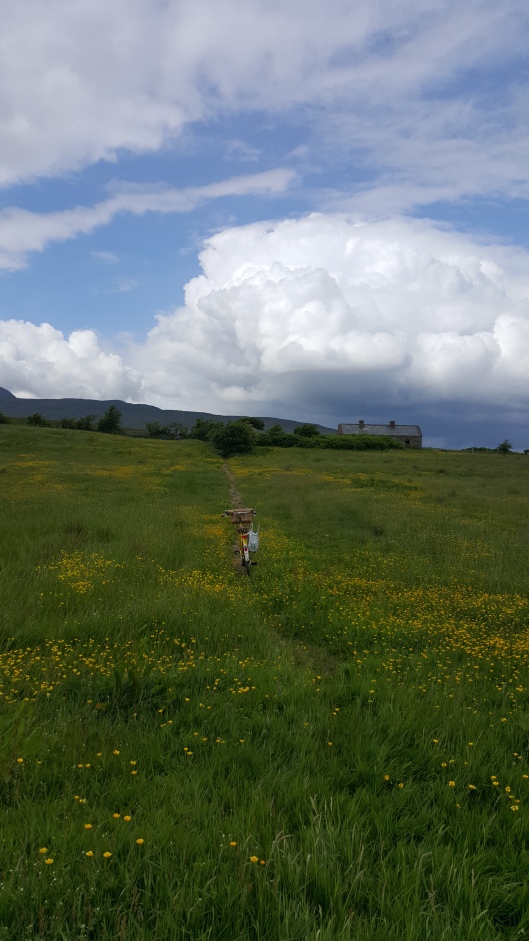
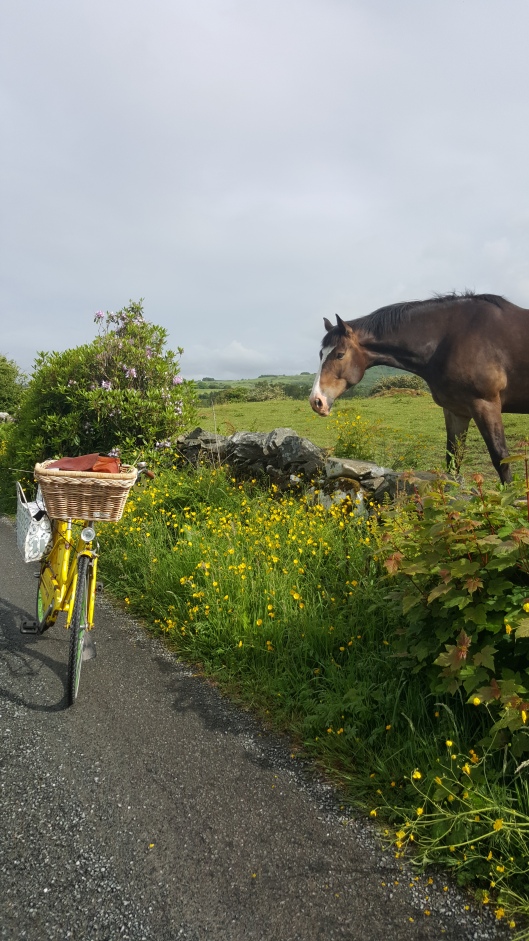

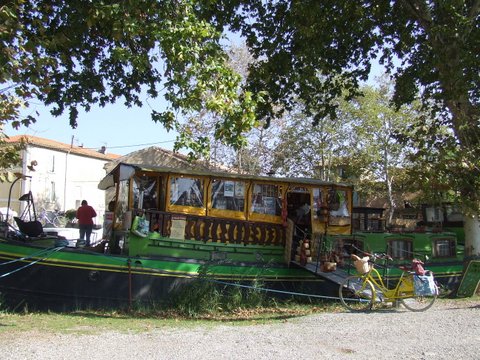
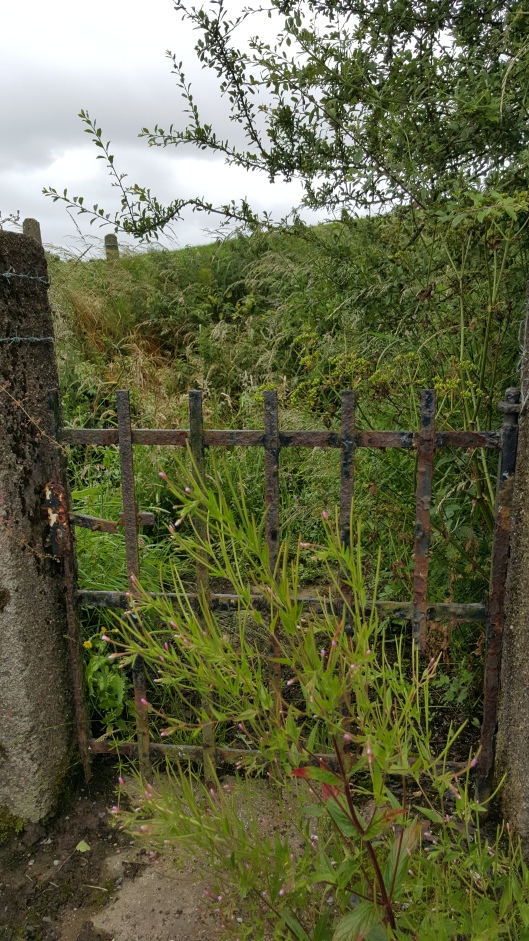
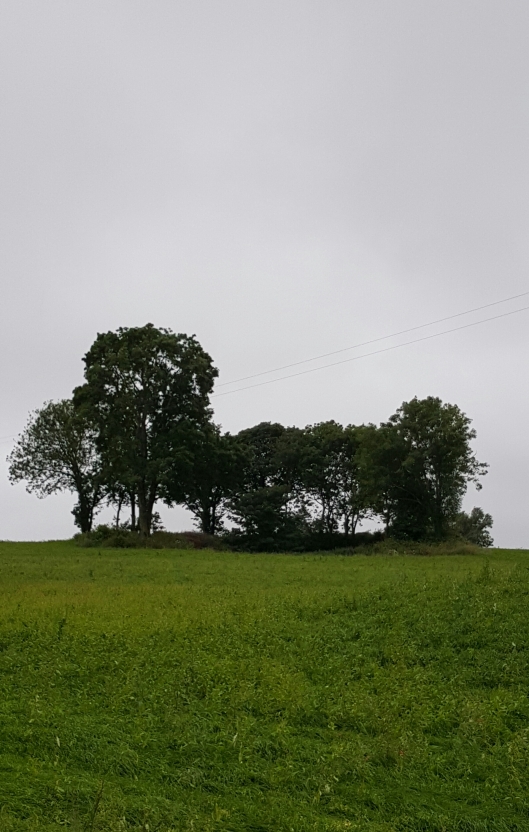
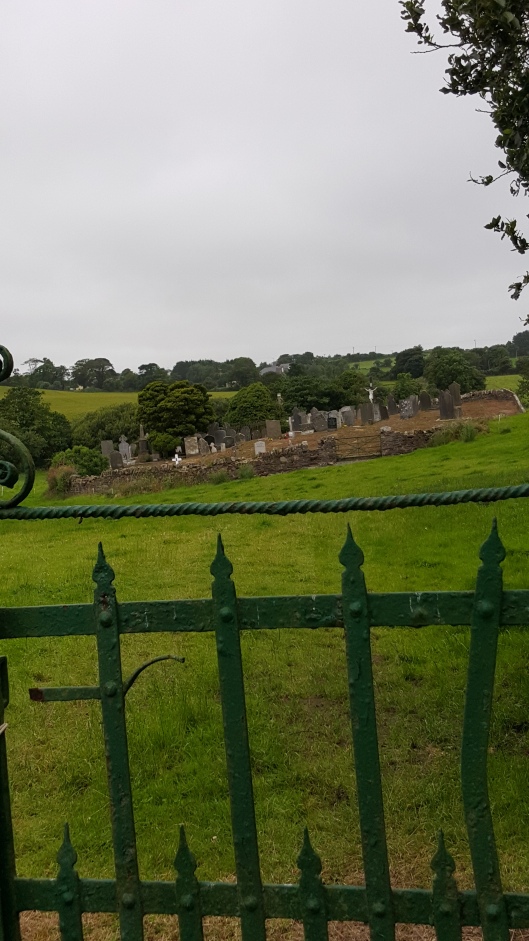
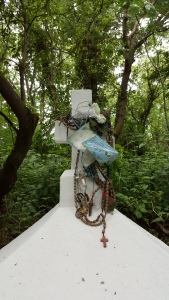
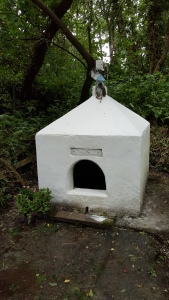
What an interesting post – I had never thought of how holy wells had come about but of course what you say makes perfect sense (like Croagh Patrick being a pagan mountain well before Christianity). How sad that some of these wells are being lost and disappearing under vegetation.
LikeLiked by 1 person
Thanks for reading Murtaghs Meadow, Please don’t take my meandering thoughts on holy wells as archaeological proof. I love to tell an auld tale so add in my own thoughts on things. xxxx
LikeLiked by 1 person
It makes a very engaging read:)
LikeLike